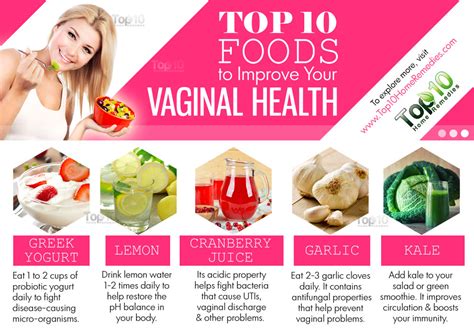How Healthy Is Your Vagina? Heres Why Its Time to Pay Attention to Your Vaginal Health
Forget a new year, new you; let’s aim for a smarter, not harder, approach to wellness. Ahead, you’ll find the foundations for a vaginal health-check—including signs that things are running smoothly… and signs that your vaginal environment has been thrown off. Plus: an OB-GYN’s tips to promote vaginal health and sexual wellness and how often […] The post How Healthy Is Your Vagina? Here’s Why It’s Time to Pay Attention to Your Vaginal Health appeared first on HUM Nutrition Blog.

Forget a new year, new you; let’s aim for a smarter, not harder, approach to wellness. Ahead, you’ll find the foundations for a vaginal health-check—including signs that things are running smoothly… and signs that your vaginal environment has been thrown off. Plus: an OB-GYN’s tips to promote vaginal health and sexual wellness and how often you really should visit your MD.
As we ease into the swing of 2024, you’re probably thinking of ways to improve your health, happiness, and well-being. With that in mind, might we suggest leaning into some routine housekeeping so you have your bases covered before advancing to loftier goals and resolutions? For instance, if you’ve been nervous to address some signs of vaginal imbalance or have otherwise missed some routine gyno appointments, consider this your cue to get on top of things, stat.
Keep reading to discover the ins and outs of vaginal health—meaning what’s normal and what could be cause for concern—as guided by Cynthia Abraham, MD, FACOG, a board-certified OB-GYN with Mount Sinai Hospital in New York City.
What Does a Healthy Vaginal Environment Look Like?
Before we dive into the key indicators suggesting that your vaginal health could use improvement, let’s first cover how to know if your vagina is healthy and balanced. “Pink, lubricated vaginal tissue and no abnormal vaginal discharge are key signs of a healthy vaginal environment,” says Dr. Abraham.
As a reminder, vaginal discharge is totally normal and expected. Per the National Health Service (NHS) of the United Kingdom, vaginal fluid keeps this sexual organ clean and moist while protecting against infection. It also helps to balance the vaginal microbiome. That said, the color, consistency, and odor of vaginal discharge should fall within certain standards for it to be healthy and A-okay:
- Color: clear or milky white
- Consistency: thin and slippery to thick
- Odor: faint (not foul or fishy)
The markers above will vary from one woman to the next—as well as based on personal factors like age, menstruation status and point in your cycle, and overall hormonal health.
Signs Your Vaginal Health Could Be Off
It’s pretty easy to spot signs of a less-than-healthy vaginal environment. Dr. Abraham cites the following as the key symptoms of vaginal imbalances:
- Recurrent infections, including yeast infections and bacterial vaginosis
- Abnormal discharge (i.e., if it’s malodorous and/or not clear or white)
- Itching
“Instances in which symptoms do not improve after over-the-counter antifungals and steroids,” she continues, will warrant medical attention. “It’s important to see a gynecologist if there’s no resolution in symptoms within 72 hours of starting over-the-counter treatment.” In some cases, continued symptoms may signal the presence of a sexually transmitted infection (STI) or another underlying health condition.
An absence of vaginal moisture may also signal that your vaginal environment isn’t in peak shape and/or that you’re dealing with hormonal imbalances. Vaginal dryness may be associated with major life stages and events—with menopause perhaps most well-known among them—on account of dips in estrogen. “Estrogen is a hormone released by the ovaries that helps maintain vaginal lubrication, elasticity, and thickness,” Dr. Abraham previously told HUM. “Low estrogen levels can also occur after childbirth and with breastfeeding.”
In addition, vaginal dryness, thinning, and inflammation may also reflect imbalances in the vaginal microbiome. For instance, a 2014 study in the journal Menopause showed that a low abundance of certain Lactobacillus bacteria strains was associated with vulvovaginal atrophy (a common condition in which the vaginal lining dries and thins out, leading to pain and discomfort).
A few other signs and events may also let you know that it’s time to see your gynecologist, such as:
- The presence of any bumps, sores, discoloration, and similar abnormalities
- Major changes in your menstrual cycle and/or irregular bleeding
- Pain during sexual activity
8 Tips to Promote Vaginal Health and Sexual Wellness
It’s all too common for women to shy away from merely talking about vaginal health, as well as investigating things on their own—especially if an issue (and consequent embarrassment or fear) arises. However, it’s important to remember that you’re not alone and you don’t need to engage in negative self-talk or cave into a shame spiral. After all, neither will help you get your vaginal health—not to mention mental health—back on track.
As is the case with any health matters, it’s crucial to be proactive and take necessary precautions sooner than later. Here are 8 of Dr. Abraham’s top suggestions to support vaginal and sexual health on a routine basis:
- Wear loose cotton underwear for breathability and comfort
- Use soap and water when bathing and never apply soap inside your vagina
- Avoid douching, which can wreak havoc on your vaginal microbiome and is even associated with an increased risk of adverse gynecological health outcomes
- Take probiotics (such as HUM’s Private Party) to support healthy bacterial balance and improve immune defenses
- Practice safe sex, namely by using condoms to prevent new organisms from entering your vagina
- Urinate after sexual intercourse
- Clean sex toys thoroughly after each use
- Consulting your gynecologist as needed and on a routine basis
On this last point, Dr. Abraham reminds us that you need to go beyond making a gynecological appointment only when something seems off down there. “It is very important that patients see the gynecologist annually,” she shares. “However, PAP smears do not need to be performed annually. In the absence of abnormal cells and high-risk HPV, The interval can be expanded to every 3 to 5 years.” She adds that PAPs can be discontinued by the time you reach age 65, so long as you’ve had normal PAPs over the past 10 years and have no history of severe cervical dysplasia in the past 25 years.
The post How Healthy Is Your Vagina? Here’s Why It’s Time to Pay Attention to Your Vaginal Health appeared first on HUM Nutrition Blog.

 mainadmin
mainadmin 










